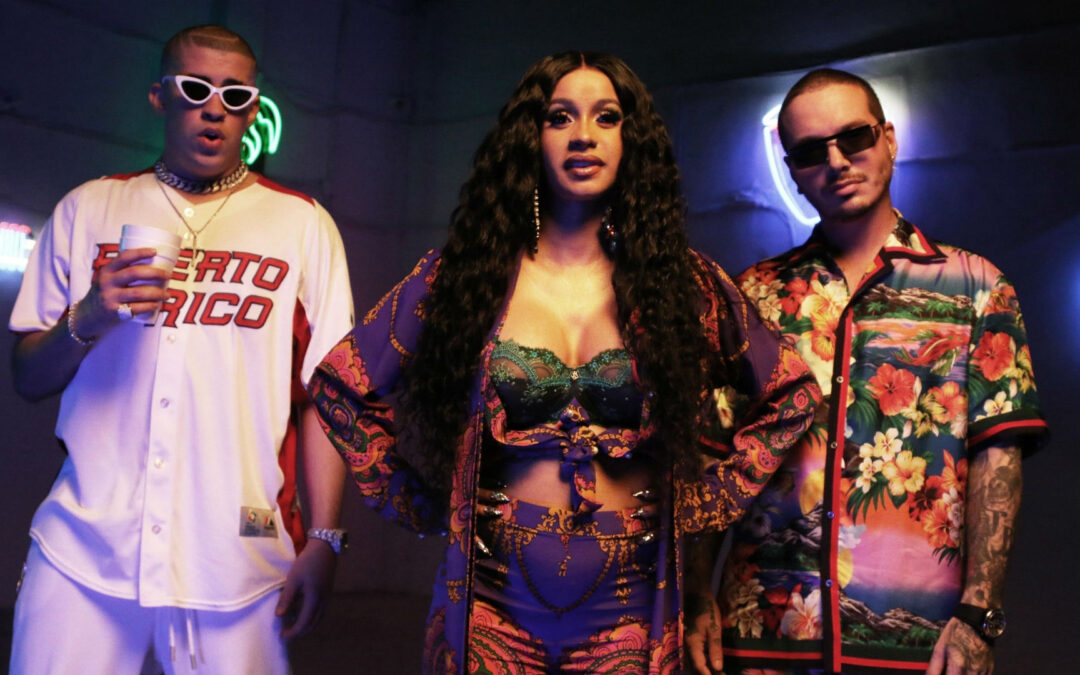Latin music has been a cultural staple for decades, with its origins tracing back to the rhythms and beats brought to the Americas by African slaves and European colonizers. In recent years, however, Latin music has become a global sensation, with artists like J Balvin, Bad Bunny, and Daddy Yankee dominating the charts and influencing popular culture worldwide.
In this blog post, we’ll explore the rise of Latin music and its global influence in 2023, including the impact of streaming platforms, the growth of specific genres like reggaeton and Latin pop, crossover success, collaborations, festivals, social media, and the future of the industry.
Latin Music Industry
The Latin music industry has experienced tremendous growth in recent years, thanks in part to the rise of streaming platforms. According to a report by the International Federation of the Phonographic Industry (IFPI), Latin America saw a 17.7% increase in revenue from streaming services in 2021, making it the fastest-growing region in the world. The report also states that Latin American streaming subscribers increased by 35.8% in 2021, with Brazil and Mexico leading the way.
Reggaeton
Reggaeton is a popular Latin music genre that originated in Puerto Rico in the 1990s. Its signature sound blends reggae and dancehall with Latin American beats and rhythms, and it has become a global sensation in recent years.
According to a report by the Recording Industry Association of America (RIAA), reggaeton and Latin trap were the fastest-growing music genres in the United States in 2021, with a 24% increase in on-demand streams compared to the previous year. The report also states that Latin music made up 5.4% of all on-demand streams in the US in 2021, up from 4.5% in 2020.
Latin Pop
Latin Pop is another popular Latin music genre that has seen tremendous growth in recent years. It blends traditional Latin American rhythms with pop music, creating a catchy and upbeat sound that appeals to a global audience. According to a report by the IFPI, Latin Pop was the second most-streamed music genre in the world in 2021, behind only Pop. The report also states that Latin Pop saw a 17.1% increase in revenue from streaming services in 2021, with Brazil and Mexico once again leading the way.
Crossover Success
One of the most significant trends in Latin music in recent years has been the rise of crossover success, with Latin artists crossing over into the mainstream music industry. This has been evident in the success of artists like J Balvin and Bad Bunny, who have collaborated with mainstream artists like Beyoncé and Cardi B, and have even performed at major events like the Super Bowl halftime show.
According to a report by Billboard, 2021 saw a significant increase in collaborations between Latin and mainstream artists, with the number of Latin music collaborations in the top 100 of the Billboard Hot 100 increasing by 22% compared to the previous year.

Latin Pop sensation Bad Bunny at the film premiere for ‘Bullet Train’ in 2022
The success of crossover collaborations has not only introduced Latin music to new audiences, but it has also created opportunities for Latin artists to showcase their talents on a global stage. This has led to an increase in visibility and recognition for Latin music and its artists.
The impact of crossover collaborations can also be seen in the numbers. According to a report by Nielsen Music, Latin music accounted for 5.8% of all music consumption in the United States in 2020, up from 5% in 2019. The report also noted that Latin music was the only genre to experience growth in album sales, with a 12.9% increase from the previous year.
Furthermore, Latin music has also been dominating the charts. In 2020, 30% of the top 100 songs on the Billboard Hot 100 chart were in Spanish or featured Latin artists, compared to just 5% in 2016. This indicates that the popularity of Latin music is only continuing to grow and shows no signs of slowing down.
Overall, crossover collaborations have played a significant role in the rise of Latin music and its global influence. By breaking down language and cultural barriers, Latin music has become a universal language that connects people around the world.
Collaborations in Latin Music
Collaborations have been a significant part of the success of Latin music in recent years, with artists teaming up to create new and exciting sounds. One of the most famous collaborations in recent years was the 2017 hit “Despacito” by Luis Fonsi and Daddy Yankee, which featured a remix with Justin Bieber. The song became a global sensation, topping the charts in numerous countries and breaking multiple records. According to a report by Nielsen Music, “Despacito” was the most-streamed song of 2021, with over 1.3 billion on-demand streams.
Collaborations have been a key factor in the rise of Latin music and its global influence. Latin artists have been collaborating not only with mainstream artists but also with other Latin artists from different countries, creating a fusion of sounds and styles that is unique to the genre.
Collaborations between Latin artists from different countries have helped to showcase the diversity of Latin music and its various sub-genres. For example, the collaboration between Mexican band Los Ángeles Azules and Colombian singer Natalia Lafourcade on the song “Nunca Es Suficiente” combines cumbia, a popular genre in Mexico, with Lafourcade’s pop sensibilities, creating a fresh and modern take on a traditional style of music.
Collaborations have also helped to promote Latin music in countries where it may not have been as popular before. For example, the collaboration between Colombian singer Shakira and Lebanese singer Amr Diab on the song “Nour El Ein” helped to introduce Arabic audiences to Latin music, and the collaboration between Colombian singer Carlos Vives and Italian singer Laura Pausini on the song “La Vida Es Un Carnaval” helped to promote Latin music in Italy.
In addition to promoting Latin music globally, collaborations have also helped Latin artists to expand their fan base and gain new followers. For example, the collaboration between Colombian singer J Balvin and Spanish singer Rosalía on the song “Con Altura” helped to introduce J Balvin to Rosalía’s fan base in Spain, and the collaboration between Puerto Rican rapper Anuel AA and American rapper Travis Scott on the song “Futsal Shuffle 2020 (Remix)” helped to introduce Anuel AA to Travis Scott’s fan base in the United States.
Collaborations have also led to numerous awards and accolades for Latin artists. In 2020, the collaboration between Colombian singer Maluma and American singer The Weeknd on the song “Hawái (Remix)” won the Latin American Music Award for Favorite Remix, and the collaboration between Puerto Rican singer Ozuna and American rapper Doja Cat on the song “Del Mar” was nominated for a Latin Grammy Award for Best Urban Song.
Overall, collaborations have played a significant role in the rise of Latin music and its global influence. By breaking down language and cultural barriers and creating a fusion of sounds and styles, collaborations have helped to promote Latin music globally and showcase its diversity and creativity.
Latin Music Festivals
Latin music festivals have become increasingly popular in recent years, providing a platform for Latin artists to showcase their talents and connect with fans around the world. One of the most popular Latin music festivals is the annual Calle Ocho Festival in Miami, which attracts over one million attendees each year.
The festival features live music, food, and cultural exhibits, and is a celebration of Latin culture and music. Other popular Latin music festivals around the world include the Latin Alternative Music Conference in New York City, the Festival Internacional de la Canción de Viña del Mar in Chile, and the Festival de la Leyenda Vallenata in Colombia.
Latin Music and Social Media
Social media has played a significant role in the success of Latin music in recent years, providing artists with a platform to connect with fans and promote their music. According to a report by Hootsuite, Latin America has some of the highest social media penetration rates in the world, with 60% of the population using social media.
This has allowed Latin artists to reach a wider audience and connect with fans around the world. One example of this is the success of Puerto Rican singer and rapper Bad Bunny, who has over 45 million followers on Instagram and has used social media to promote his music and connect with fans.
Social media has played a vital role in the rise of Latin music and its global influence. Latin music has a strong presence on social media platforms like YouTube, Instagram, and TikTok, with Latin artists using these platforms to connect with fans, promote their music, and showcase their talents.
One of the ways that social media has helped to promote Latin music is through viral challenges and dance crazes. Songs like “Despacito” and “Dura” have become global hits in part because of their catchy beats and accompanying dance moves that have gone viral on social media platforms. Fans create their own videos dancing to the songs and share them on social media, helping to promote the songs and generate buzz around the artists.
Social media has also helped to promote Latin music by providing a platform for artists to connect directly with their fans. Latin artists use social media platforms like Instagram and Twitter to share updates about their music, tour dates, and personal life, creating a more personal connection with their fans. This direct connection with fans helps to build loyalty and engagement, leading to increased support for the artists and their music.
Another way that social media has helped to promote Latin music is through the rise of influencers and content creators. Influencers and content creators have millions of followers on social media and have a significant impact on what is popular and trending. Many Latin artists collaborate with influencers and content creators, creating sponsored content or music videos that promote their music to a wider audience.
Social media has also helped to create opportunities for emerging Latin artists to gain recognition and build a fan base. Platforms like Soundcloud and YouTube have allowed Latin artists to upload their music and connect with fans without the need for major label support. This has led to the discovery of many talented new artists and the promotion of new sub-genres of Latin music.
Finally, social media has helped to create a sense of community around Latin music. Fans from all over the world can connect with each other through social media platforms and share their love for music. This has led to the creation of fan clubs, online forums, and social media pages dedicated to Latin music, helping to promote the genre and build a strong fan base.
All in all, social media has played a crucial role in the rise of Latin music and its global influence in 2023. By providing a platform for artists to connect with fans, promoting viral challenges and dance crazes, and creating a sense of community around the music, social media has helped to break down barriers and promote a greater understanding and appreciation of Latin culture and music.
The Future of Latin Music
The future of Latin music looks bright, with the genre poised for continued growth and success in the global music industry. However, there are challenges that lie ahead, including the need for greater representation and diversity within the industry.
According to a report by the Latin Recording Academy, only 4% of Latin music producers are women, and there is a need for greater representation of Afro-Latino and indigenous artists. Addressing these challenges will be essential to ensuring the continued growth and success of Latin music in the future.
The future of Latin music looks bright and promising, with continued growth and expansion on the horizon. As Latin music continues to gain popularity and mainstream success, more and more artists are emerging and pushing the boundaries of the genre, incorporating new sounds and styles.
One of the trends that is expected to shape the future of Latin music is the fusion of Latin music with other genres. Latin artists are already collaborating with mainstream artists and incorporating elements of pop, hip-hop, and electronic music into their songs. This trend is expected to continue and expand, with Latin artists experimenting with new sounds and styles and creating a unique blend of genres.
Another trend that is expected to shape the future of Latin music is the increased representation of female artists. In recent years, female Latin artists like Rosalía, Karol G, and Becky G have achieved mainstream success and broken down barriers for women in the genre. This trend is expected to continue, with more female artists emerging and gaining recognition for their talents.
The rise of streaming platforms like Spotify and Apple Music has also played a significant role in the growth of Latin music and is expected to continue to do so in the future. These platforms have helped to promote Latin music globally, allowing fans from all over the world to discover new artists and songs. In addition, these platforms have created opportunities for Latin artists to reach new audiences and expand their fan base.
Another trend that is expected to shape the future of Latin music is the increased focus on social and political issues. Latin music has always been a form of cultural expression, and many Latin artists are using their platform to raise awareness about social and political issues affecting their communities. For example, Puerto Rican rapper Residente’s song “Latinoamérica” addresses issues of poverty and inequality in Latin America, while Colombian singer Juanes’ song “Fuego” addresses the topic of immigration.
Finally, the increased recognition and representation of Latin music in mainstream media and entertainment is expected to continue to grow in the future. In recent years, Latin music has been featured in major Hollywood films like “Coco” and “La La Land,” and Latin artists have performed at major events like the Super Bowl and the Grammy Awards. This increased exposure is helping to break down barriers and promote a greater understanding and appreciation of Latin culture and music.
In conclusion, the rise of Latin music and its global influence in 2023 is a testament to the creativity, diversity, and talent of Latin artists. As Latin music continues to evolve and expand, it is sure to inspire and captivate audiences around the world for years to come.
Check out: The Rise of K-pop and its Influence on the Global Music Industry
Conclusion
Latin music has become a global sensation in recent years, with its unique sounds and rhythms captivating audiences around the world. The rise of streaming platforms, the growth of specific genres like reggaeton and Latin pop, crossover success, collaborations, festivals, social media, and the future of the industry all point to a bright future for Latin music. As the industry continues to grow and evolve, it will be essential to address the challenges of diversity and representation to ensure that the genre remains vibrant and inclusive for years to come.
Ultimately, the rise of Latin music and its global influence in 2023 is a testament to the power of music to bring people together and bridge cultural divides. Latin music has taken the world by storm, and its success is due to a combination of factors, including the rise of streaming platforms, crossover success, collaborations, and social media. As we look to the future, it is clear that Latin music will continue to evolve and grow, and we can expect to see even more exciting developments in the years to come.






